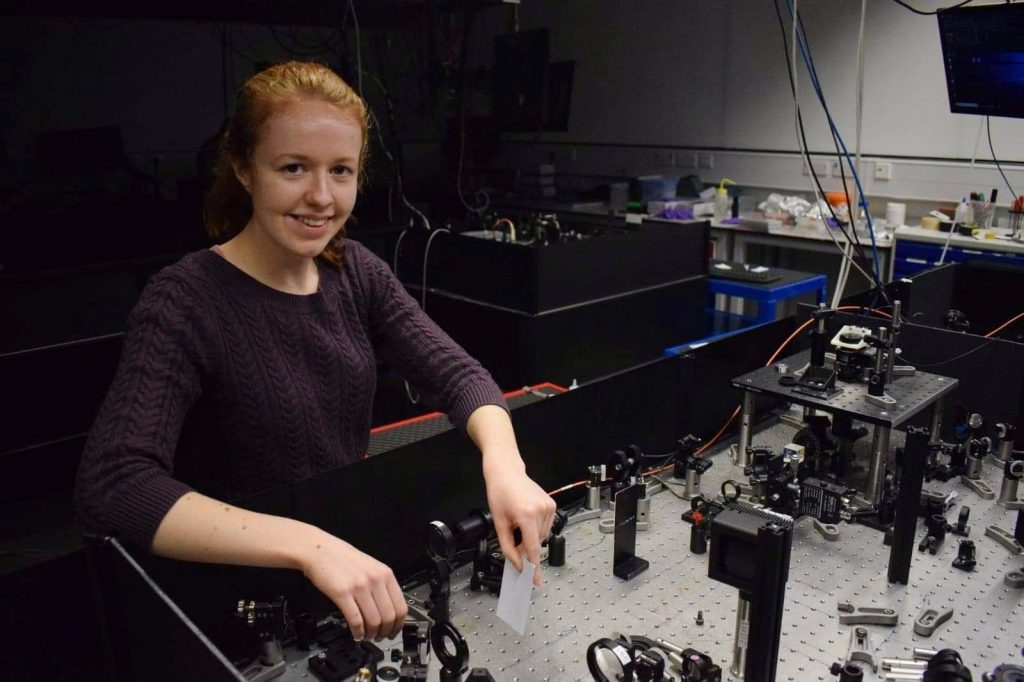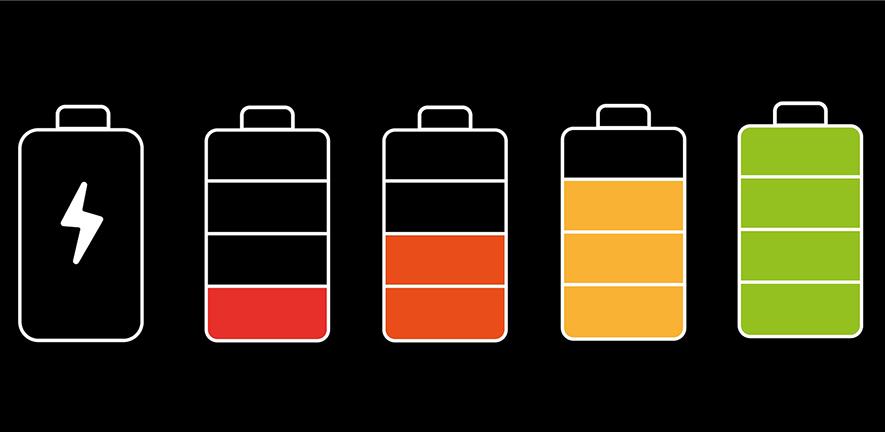Alice Merryweather (c2018) is the lead author on a paper published in the journal Nature, reporting an a new optical technique called interferometric scattering microscopy (iScat) that allows looking inside lithium-ion batteries and follow lithium ions moving in real time as the batteries charge and discharge, something which has not been possible until now. This is Alice’s first paper, so it is quite commendable that it is as lead author in one of the most reputed journals.
To improve lithium-ion batteries and help them charge faster, researchers need to follow and understand the processes occurring in functioning materials under realistic conditions in real time. Currently, this requires sophisticated synchrotron X-ray or electron microscopy techniques, which are time-consuming and expensive.
“To really study what’s happening inside a battery, you essentially have to get the microscope to do two things at once: it needs to observe batteries charging and discharging over a period of several hours, but at the same time it needs to capture very fast processes happening inside the battery,” said Alice. Using the iScat technique, the research team members were able to observe individual particles of lithium cobalt oxide (often referred to as LCO) charging and discharging by measuring the amount of scattered light.
They were able to see the LCO going through a series of phase transitions in the charge-discharge cycle. The phase boundaries within the LCO particles move and change as lithium ions go in and out. The researchers found that the mechanism of the moving boundary is different depending on whether the battery is charging or discharging.
“We found that there are different speed limits for lithium-ion batteries, depending on whether it’s charging or discharging,” said Dr Akshay Rao, Alice’s PhD supervisor at the Department of Physics. “When charging, the speed depends on how fast the lithium ions can pass through the particles of active material. When discharging, the speed depends on how fast the ions are inserted at the edges. If we can control these two mechanisms, it would enable lithium-ion batteries to charge much faster.”
“Given that lithium-ion batteries have been in use for decades, you’d think we know everything there is to know about them, but that’s not the case,” said Dr Chris Schnedermann, who is the post doctoral researcher who closely works with Alice and has helped her really master some key experimental skills that were needed for the work. “This technique lets us see just how fast it might be able to go through a charge-discharge cycle. What we’re really looking forward to is using the technique to study next-generation battery materials – we can use what we learned about LCO to develop new materials.”
“The technique is a quite general way of looking at ion dynamics in solid-state materials, so you can use it on almost any type of battery material,” said Professor Clare Grey, Alice’s co-supervisor from Cambridge’s Yusuf Hamied Department of Chemistry.
The high throughput nature of the methodology allows many particles to be sampled across the entire electrode and, moving forward, will enable further exploration of what happens when batteries fail and how to prevent it.

Reference:
Alice J. Merryweather et al. ‘Operando optical tracking of single-particle ion dynamics in batteries.’ Nature (2021). DOI: 10.1038/s41586-021-03584-2

